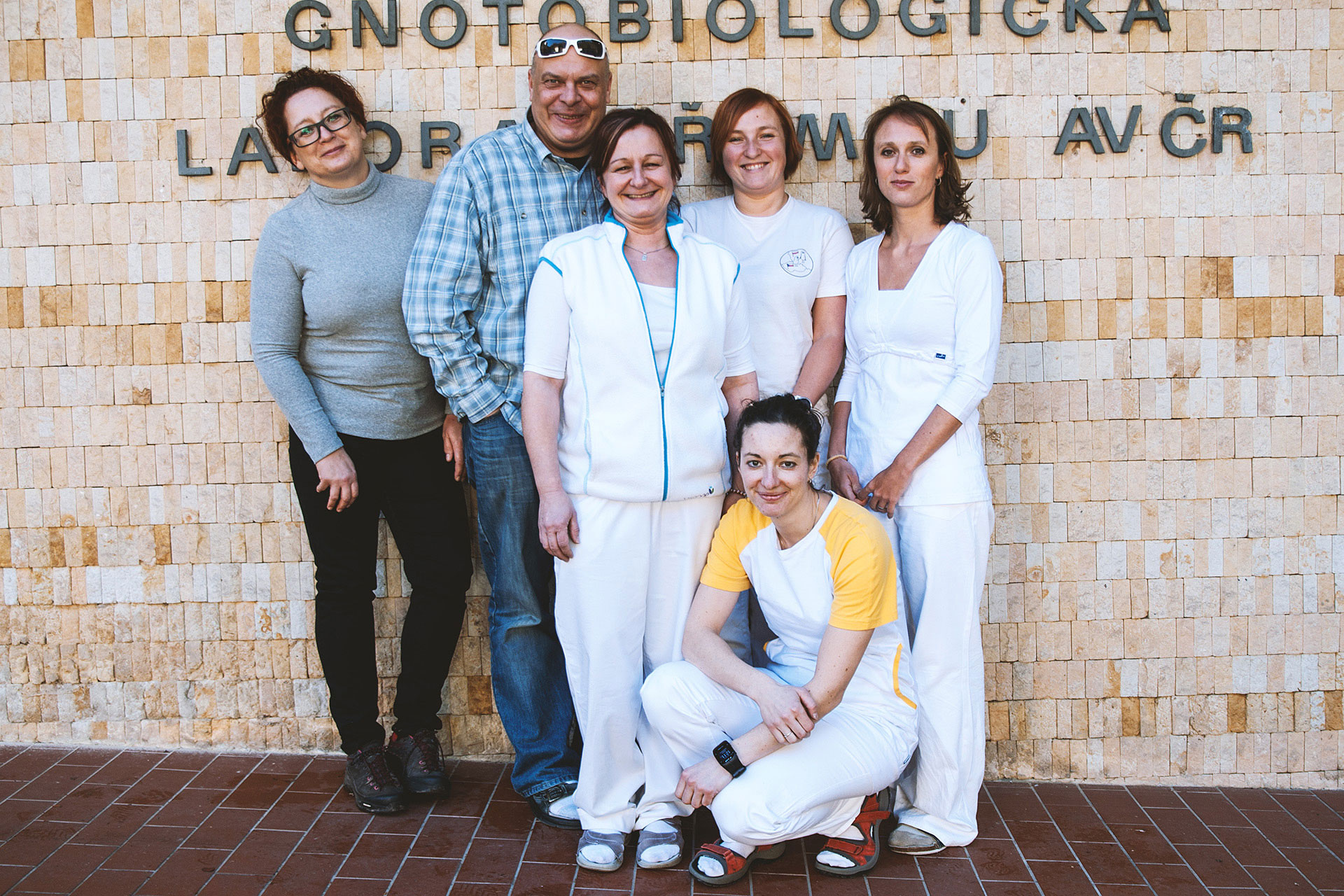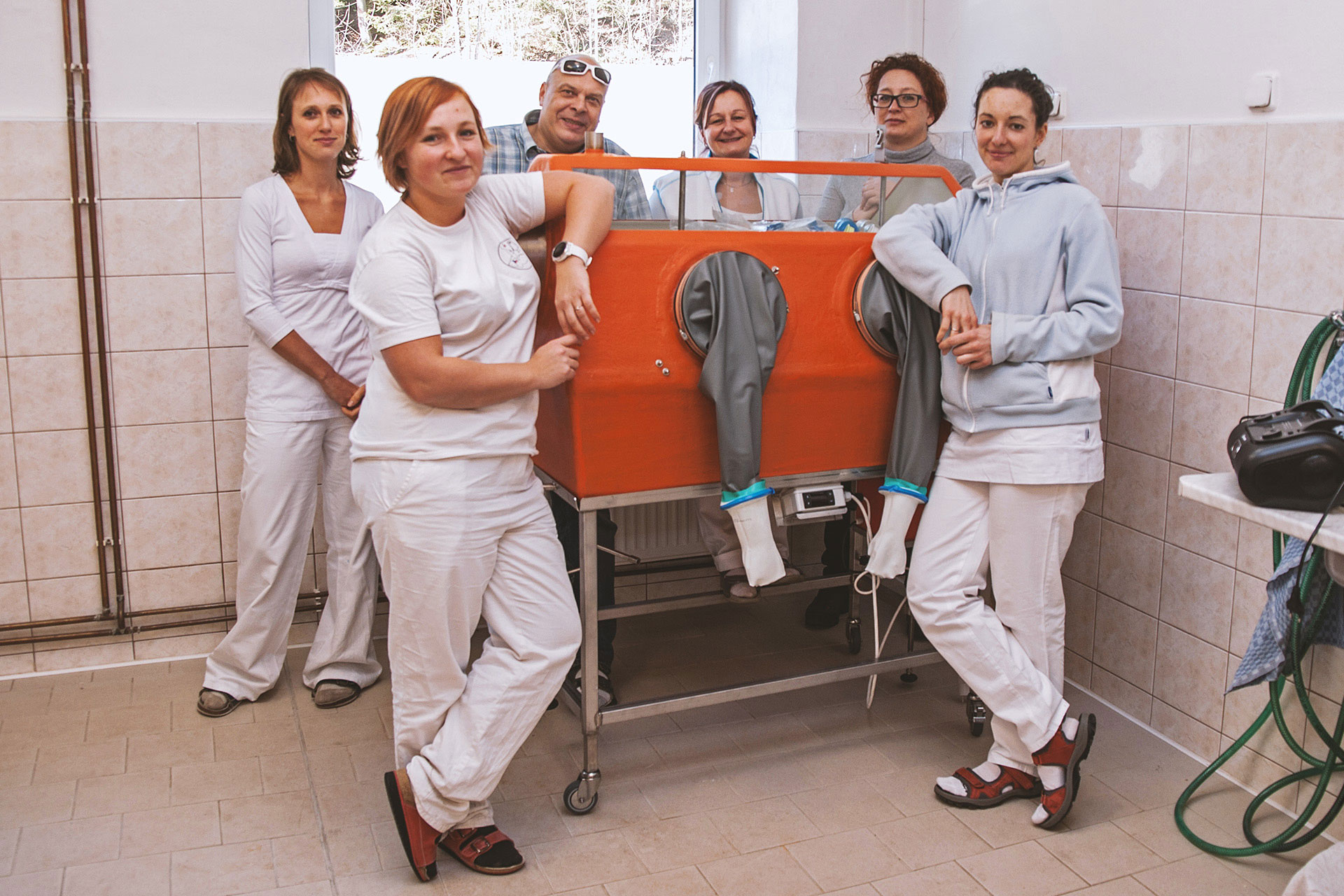Introduction
Head of the Laboratory & Group Leader: Marek Šinkora, PhD. (marek@biomed.cas.cz)
The adaptive immune systemAdaptive immune system
Wikipedia of higher vertebrates is believed to have evolved to counter the ability of pathogens to avoid expulsion because of their high rate of germline mutations. Vertebrates developed this adaptive immune response through the evolution of lymphocytes capable of somatic generation of a diverse repertoire of their specific receptors without the need to increase the frequency of germline mutation. The focus of our research is on the ontogenetic development of the lymphocytes, and the repertoires they generate in swine.
For a variety of reasons, swine are useful subjects in which to study lymphocyte development. The relatively long gestation (114 days) provides a convenient opportunity for characterizing sequential developmental events during fetal life. Pigs possess an epitheliochorial placenta that includes six layers and prevents prenatal transfer of maternal immunoglobulins (as well as probably smaller proteins) to the fetus and offspring. For this reason, newborn piglets are devoid of transferred maternal immunity, and the most immediate source of newborn protection is ingested colostrum (the very early mother milk). Without colostrum these piglets will die. On the other hand, piglets can be aseptically born into sterile isolators thus preventing exposure to all environmental and maternal factors while those that are intrinsic develop. And because pigs are precocial, they do not need their mothers to survive. This makes these so called germ-free piglets uniquely useful for studies of the naive immune system and allows the experimenter to control most extrinsic factors. This is not possible with laboratory rodents or primates because they transmit maternal factors in utero and they are altricial and cannot be reared after birth without their mothers. Because swine have numerous offspring, studies are more economically feasible and of better experimental design, than in other ungulates that share a similar maternal–fetal relationship as regards the transfer of passive immunity.
Our laboratory is primarily concentrated on studies of B and T lymphocyte development in swine. Our activities include investigation of early development of immune systemSinkora J, Rehakova Z, Sinkora M, Cukrowska B, Tlaskalova-Hogenova H
Early development of immune system in pigs..
Vet Immunol Immunopathol. 2002, 87: 301-306. , particularly B cell developmentSinkora M, Sinkorova J, Butler JE
B cell development and VDJ rearrangement in the fetal pig..
Vet Immunol Immunopathol. 2002, 87: 341-346. , immunoglobulin rearrangementButler JE, Zhao Y, Sinkora M, Wertz N, Kacskovics I
Immunoglobulins, antibody repertoire and B cell development..
Dev Comp Immunol. 2009, 33: 321-333. and development of lymphocyte repertoireButler JE, Sun J, Wertz N, Sinkora M.
Antibody repertoire development in swine..
Dev Comp Immunol. 2006, 30: 199-221. . We also study other lymphocyte subpopulationsSinkora M, Butler JE, Holtmeier W, Sinkorova J
Lymphocyte development in fetal piglets: facts and surprises..
Vet Immunol Immunopathol. 2005, 108(1-2): 177-184. . Our goal is to bring new insights into the field of comparative immunologyButler JE, Sinkora M, Wertz N, Holtmeier W, Lemke CD
Development of the neonatal B and T cell repertoire in swine: implications for comparative and veterinary immunology..
Vet Res. 2006, 37: 417-441. using germ-free and gnotobiotic pigletsButler JE and Sinkora M
The isolator piglet: a model for studying the development of adaptive immunity..
Immunol Res. 2007, 39: 33-51. . Our ontogenetic studiesSinkora M and Butler JE
The ontogeny of the porcine immune system..
Dev Comp Immunol. 2009, 33: 273-283. reveal many unique features relevant to the field of comparative immunologyButler JE, Lager KM, Splichal I, Francis D, Kacskovics I, Sinkora M, Wertz N, Sun J, Zhao Y, Brown WR, DeWald R, Dierks S, Muyldermans S, Lunney JK, McCray PB, Rogers CS, Welsh MJ, Navarro P, Klobasa F, Habe F, Ramsoondar J
The piglet as a model for B cell and immune system development..
Vet Immunol Immunopathol. 2009, 128: 147-170. by showing what is universal and what is species or even strain or individual specificButler JE and Sinkora M
The enigma of the lower gut-associated lymphoid tissue (GALT)..
J Leukoc Biol. 2013, 94: 259-270. . Our research also concerns infectionsButler JE, Lager KM, Golde W, Faaberg KS, Sinkora M, Loving C, Zhang YI
Porcine reproductive and respiratory syndrome (PRRS): an immune dysregulatory pandemic..
Immunol Res. 2014, 59: 81-108. . Our recent reviews summarize progress in the use of swine in developmental immunologySinkora M and Butler JE
Progress in the use of swine in developmental immunology of B and T lymphocytes..
Dev Comp Immunol. 2016, 58: 1-17. and development of antibody repertoireButler JE, Wertz N, Sinkora M
Antibody Repertoire Development in Swine..
Annu Rev Anim Biosci. 2017, 5: 255-279. . For more information see our research activities.

